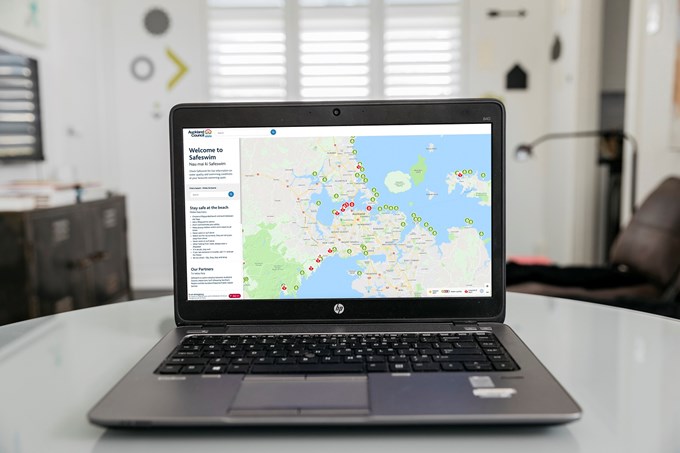Ready for summer?
Auckland Council’s Safeswim website is, with a range of new improved features on offer to beachgoers.
2017 was a real eye-opener for many Aucklanders with the realisation the water quality and beach safety at their favourite swimming spots wasn’t always as good as they thought.
Using real-time, modelled data, Safeswim shows that when it rains the water quality at some of Auckland’s beaches can be affected by contamination.
That contamination can come from a variety of sources including birds, dogs, livestock, onsite wastewater systems or wastewater overflows (due to a variety of causes including illegal drainage connections).
“Safeswim allows us to better understand our water quality issues, pinpoint where the issues are and help us clean up our beaches," says Mayor Phil Goff.
“We are investing hundreds of millions of dollars to address the problem through a new targeted rate that will clean up Auckland’s beaches in ten years rather than the 30 years it was going to take.
"Much of this rate will be spent on the western isthmus area to support Watercare’s investment including its central interceptor project,” the Mayor said.
However, the targeted rate will also be used to fund regionwide projects to improve water quality including improved compliance of onsite wastewater systems and programmes to identify the sources of contamination in separate stormwater networks.
“We’re making progress on the quality of water at our beaches,” adds Mayor Goff.
“In October we were able to tell Aucklanders that four beaches in the Manukau Harbour which have been no-go areas, some of them for the past 20 years, are now open for summer.
“Swimming at our beaches is at the heart of a kiwi summer. Our work over the next ten years will restore our beaches as safe places to swim for the people of Auckland,” he said.
“Auckland Council and Watercare need to work in partnership with the community to lift beach water quality; we recognise it’s a complex issue and there’s no silver bullet,” says Improvement Programme Manager Anin Nama.
The Safeswim website redesign and functionality changes, display new features including:
- the removal of ‘amber’ status which was often mistakenly interpreted as non-compliant; this simplifies the modelled health risk icons to solely ‘green’ (compliant) and ‘red’ (non-compliant) water droplets; to reflect the change, on-beach signs at the beaches patrolled by Surf Life Saving Northern Region have also been redesigned
- the addition of a ‘black’ water droplet icon indicating an overflow from the Watercare wastewater network; wastewater overflows have a significantly higher public health risk than general stormwater contamination; the black droplet makes it clear a very high risk exists. A beach can have a “black” water droplet in wet or fine weather. It’s usually due to an overflow caused by a blockage in the wastewater system or a fault at a pump station.
- addition of a new ‘orange’ diamond safety alert to identify a range of physical beach hazards including alerts direct from Surf Lifesaving Northern Region
- the process of adding new sites has begun, increasing incrementally during the summer season; the first of these is an additional site on Takapuna Beach; other sites will be added as sufficient data is collected, potentially up to 40 new sites by the end of summer
- users can now personalise their own Safeswim experience by creating their own profile, adding beaches to a ‘favourites’ list, opting in for notifications for some phones, to sharing Safeswim information with family and friends
- the addition of key swim event pin to advise on public health risk for some offshore swimming courses themselves rather than the more contaminated surf zone of the beach
- the inclusion of weather, tide and water temperature data on the Safeswim website.
Check the Safeswim website for information on swimming conditions and water quality around Auckland.
Safeswim’s Programme Manager Nick Vigar comments, "this tool is great news for anyone who enjoys the beach; it's really easy to use to find out before you head out how your favourite spot is faring, and we’d urge Aucklanders to make use of the online service.”


